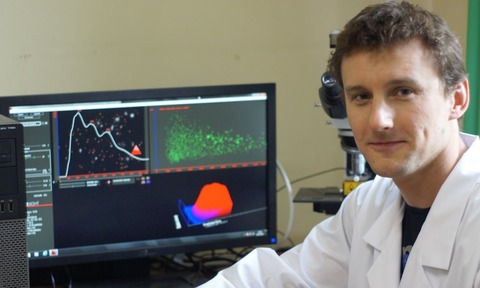
Nanoparticle Tracking Analysis is being used by the Jagiellonian University in Poland for the characterisation of catalytic materials used in environmental applications.
Dr Pawel Stelmachowski of the Materials and Surface Chemistry Group at the Jagiellonian University in Krakow said: “The Group’s research goals are the design, development and optimisation of catalytic materials. These are used mainly for environmental applications such as N2O decomposition and soot oxidation.
“The phase cooperation of crystallites of different sizes and deposition of active phase on monolithic supports requires sizing and characterisation measurements and this is why NTA was chosen.”
Describing his practical reasons for choosing NTA, Dr Stelmachowski added: “It’s useful to evaluate the particle sizes prior to the TEM analysis which is much more expensive and time consuming and which requires good quality samples. We want to know the size and dispersion of the active phase particles prior to deposition on monolithic substrate.”
Dr Stelmachowski continued: “Before using NTA, I used dynamic light scattering (DLS) but encountered several problems whereas NTA is fast and easy to operate. The most very important feature for me is that NTA works with powders in suspension so the sedimentation and presence of big particles is not an issue here as it was with DLS.
“Powders with large dispersion of particle sizes are much more easily characterised. The thing with sedimentation is that it is caused by the presence of very large particles, usually from not very well-ground powder. This means the preparation of the sample is less demanding, much easier with NTA,” he said.




